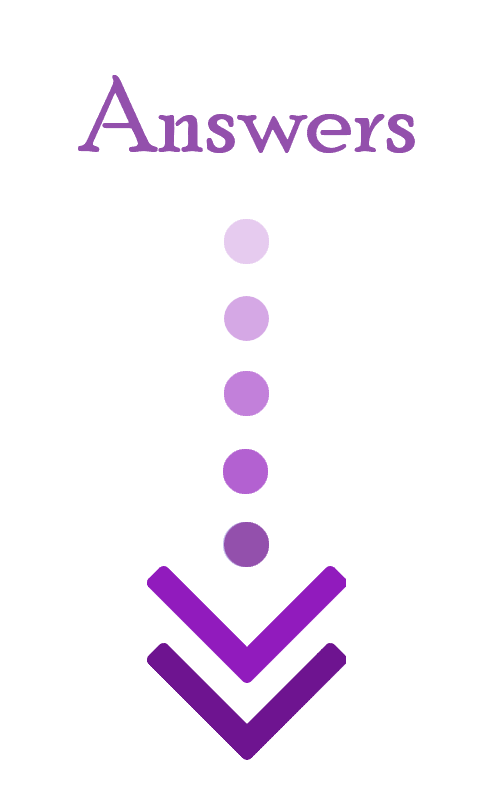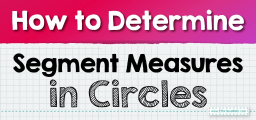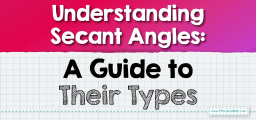The Unit Circle
A unit circle from the name itself defines a circle of unit radius. In the following guide, you will learn more about the unit circle.

The location of a point that is a distance of one unit from a fixed point is called a unit circle.
Related Topics
A step-by-step guide to the unit circle
A unit circle is a circle with a radius of \(1\) unit. The unit circle is generally shown on the Cartesian coordinate plane.
The unit circle is represented algebraically using the second-degree equation with two variables \(x\) and \(y\).
The unit circle is used in trigonometry and is useful for finding the values of the trigonometric ratios of sine, cosine, and tangent.
Equation of a unit circle
The general equation of a circle is \((x-a)^2+(y-b)^2=r^2\), which represents a circle having the center \((a, b)\) and the radius \(r\). This equation of a circle is simplified to show the equation of a circle.
A unit circle is formed with its center at the point\((0, 0)\), which is the origin of the coordinate axes and a radius of \(1\) unit. So the equation of the unit circle is:
\(\color{blue}{x^2+y^2=1}\)
Note: the above equation satisfies all the points lying on the circle across the four quadrants.
Finding trigonometric functions using a unit circle
Consider a right triangle located in a unit circle on the Cartesian coordinate plane. The radius of the circle represents the hypotenuse of the right triangle.
The radius vector makes an angle \(θ\) with the positive \(x\)-axis and the coordinates of the endpoint of the radius vector are \((x, y)\).
Here the values of \(x\) and \(y\) are the lengths of the base and the altitude of the right triangle. By applying this to trigonometry, we can find the values of the trigonometric ratio as follows:
\(\color{blue}{sin\:\theta=\frac{Altitude}{Hypoteuse}=\frac{y}{1}}\)
\(\color{blue}{cos\:\theta=\frac{Base}{Hypotenuse}=\frac{x}{1}}\)

Note: now we have \(sin\:\theta = y\), \(cos\:\theta = x\), and using this, we have \(tan\:\theta = \frac{y}{x}\).
Unit circle and trigonometric identities
For a right triangle placed in a unit circle in the cartesian coordinate plane, with hypotenuse, base, and altitude measuring \(1\), \(x\), \(y\) units respectively, the unit circle identities can be given as:
- \(\color{blue}{sin\:\theta =\frac{y}{1}}\)
- \(\color{blue}{cos\:\theta =\frac{x}{1}}\)
- \(\color{blue}{tan\:\theta =\frac{sin\:\theta }{cos\:\theta }=\frac{y}{x}}\)
- \(\color{blue}{sec\:\left(\theta \right)=\frac{1}{x}}\)
- \(\color{blue}{csc\:\left(\theta \right)=\frac{1}{y}}\)
- \(\color{blue}{cot\:\left(\theta \right)=\frac{cos\:\theta }{sin\:\theta }=\frac{x}{y}}\)
Unit Circle – Example 1:
Does point \(A (\frac{1}{2}, \frac{1}{2})\) lie on the unit circle?
Solution:
The equation of a unit circle is: \(x^2+y^2=1\)
Substituting \(x =\frac{1}{2}\) and \(y = \frac{1}{2}\), we get:
\(=\frac{1}{2}^2+\frac{1}{2}^2\)
\(=\frac{1}{4}+\frac{1}{4}\)
\(=\frac{2}{4}=\frac{1}{2}\)
\(≠ 1\)
Therefore \((\frac{1}{2}, \frac{1}{2})\) doesn’t lie on the unit circle.
Exercises for Unit Circle
Find the value of a function using a unit circle chart.
- \(\color{blue}{sin\:900^{^{\circ }}}\)
- \(\color{blue}{cos\:240^{^{\circ }}}\)
- \(\color{blue}{tan\:225^{^{\circ }}}\)

- \(\color{blue}{0}\)
- \(\color{blue}{-\frac{1}{2}}\)
- \(\color{blue}{1}\)
Related to This Article
More math articles
- 10 Most Common 7th Grade ACT Aspire Math Questions
- Top 10 8th Grade SBAC Math Practice Questions
- How Is the HSPT Test Scored?
- Evaluating Variables and Expressions
- HiSET Math Formulas
- How to do well on the PSAT test?
- 5th Grade ACT Aspire Math FREE Sample Practice Questions
- 6th Grade PARCC Math Worksheets: FREE & Printable
- The Ultimate ATI TEAS 7 Math Formula Cheat Sheet
- Top 10 Free Websites for Praxis Core Math Preparation


























What people say about "The Unit Circle - Effortless Math: We Help Students Learn to LOVE Mathematics"?
No one replied yet.